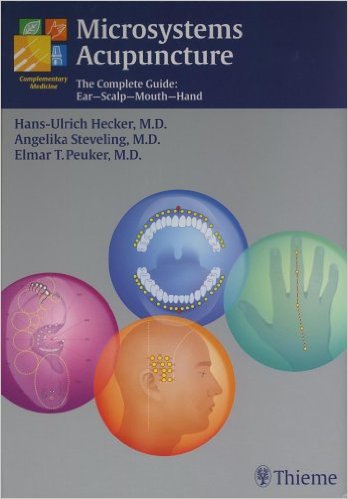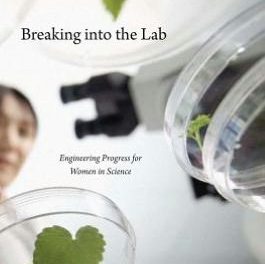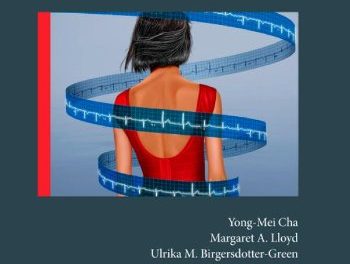Editors: Hans-Ulrich Hecker, MD; Elmar T. Peuker, MD, and Angelika Steveling, MD;
Publisher: Thieme – 336 pages, with 344 images
Book Review by: Nano Khilnani
Microsystems acupuncture is a new form of acupuncture that has supplemented and amplified traditional Chinese medicine. It is based on somatotopic fields or groups of particular points on the body. Somatotopy is the point-for-point correspondence in an area of the human body to a specific point on the central nervous system or CNS.
This book focuses on four main areas of the body with somatotopic fields: the auricle (outer ear), the scalp, the mouth, and the hand. This book describes microsystems acupuncture in detail. It consists of 13 chapters named below, with content provided by 18 people, including the editors named above, from Austria, Germany, and the United States:
Introduction: Microsystems Acupuncture Today
- Basic Principles of Auricular Acupuncture
- Topography and Indications of Auricular Acupuncture Points According to Regions
- Treatment of Major Illnesses
- Diseases of the Locomotor Systems
- The Medical Treatment of Addiction Using Acupuncture
- Yamamoto New Scalp Acupuncture
- Chinese Scalp Acupuncture
- Oral Acupuncture
- Korean Hand Acupuncture
- Chinese Hand Acupuncture
- New Point-Based Pain Organ Therapy (NPPOT)
- Laser Therapy
- Appendix
Microsystems acupuncture is used both for diagnosis and treatment, writes Jochen Gleditsch in the Introduction: Microsystems Acupuncture Today. He states: “Each of the microsystems points has a clearly defined correlation to, and interrelation with a particular organ or function. Thus microsystems acupuncture is a very effective treatment and is established for diagnosis as well.”
Gleditsch notes that the first microsystem discovered, which was in the early 1950s by the French physician Nogier, was the system of specific areas on the auricle, or outer ear. He decoded the functional correspondence of the respective auricular areas (shown in this book in large detail: on page 5, with anatomic detail; and on page 7, with zones of innervation).
Nogier found three zones on the auricle that corresponded to different functions and organs :
- Entodermal zone > metabolism, organs
- Mesodermal zone > motor system
- Ectodermal zone > head and central nervous system
He also found that the auricle is innervated by three nerves:
- The auricular branch of the vagus nerve
- The auriculotemporal nerve of the trigeminal nerve
- The great auricular nerve of the cervical plexus
An important part of this book – which describes how microsystems acupuncture is used in each of the diseases, is chapter 3, Treatment of Major Illnesses. These diseases are of many types and pertain almost all the human organ systems, including but not limited to: the cardiovascular, circulatory, dermatologic, digestive (or gastrointestinal), gynecological, motor, neurological, ophthalmic, psychosomatic, pulmonary, reproductive, respiratory, urologic, and vestibular systems.
Some of the specific conditions, disorders, and diseases that this chapter discusses are: asthma, bronchitis, cephalgia, dizziness, pollinosis, rhinitis, and sinusitis. The organs it mentions are: the heart, kidney, lung, spleen, and trachea.
We have discussed only the auricular portion of microsystems acupuncture in this review. There is much more in this very informative book when you discover the chapters on microsystems acupuncture pertaining to the hand, mouth, and hand. This is a unique resource and a helpful guide on this little-known subject, as there very few medical books available on the market that cover microsystems acupuncture.
Editors:
Hans-Ulrich Hecker, MD, LAc is a physician in private practice in Kiel, Germany.
Elmar T. Peuker, MD, LAc is a Clinical Anatomist and Physician in Private Practice in Essen, Germany
Angelika Steveling, MD, LAc is a Physician in Private Practice in Muenster, Germany.
Contributors:
Michaela Bijak, John Blank, Timm J. Filler, Hans Garten, Jochen Gleditsch, Bernhard Lichtenauer, Kay Liebchen, Dieter Muehlhoff, Helmut Nissel, Rudolf Rauch, Karen Spiegel, Daniela Stockenhuber, Karsten Strauss, Beate Strittmatter, and Max Wiesner-Zechmeister






